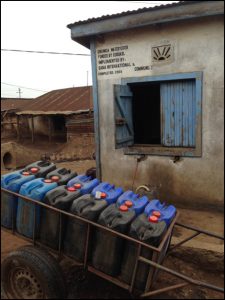Water Treatment and Supply
In developing countries surface water sources such as lakes, rivers, and reservoirs, as well as shallow aquifers are often contaminated and unsafe for drinking, yet provide the only available water source. Accessing such water may necessitate women and children carrying heavy quantities of water several kilometers.

Untreated sewage and wastewater are pervasive sources of contamination, particularly in undeveloped urban and peri-urban settings, while in rural areas, livestock herds accessing open water sources are also sources of contamination.
Water treatment practices span a range of methods including those based on physical filtration, chemical disinfection, and heat or radiation application. Likewise, the distribution of treated water can take several forms ranging from push-carts with jerry cans or tanker trucks to pressurized piped networks.
An emerging technology in drinking water production that obviates the need extensive treatment lies with Atmospheric Water Generation systems. Capable of extracting several hundred liters of pure water per day from humidity in the air, such systems, especially if solar powered, could help serve undeveloped communities with drinking water and possibly create local water bottling distribution opportunities
What we do:
At Water Pathways, we evaluate local water needs in treatment and distribution that are identified by local organizations; then in coordination with engineering and technology providers, prepare project proposals and assists in presentations for fund raising and business development. Ongoing projects in Nyahururu, Kenya, Mboole, Zambia, and near Bulawayo, Zimbabwe illustrate this involvement.
